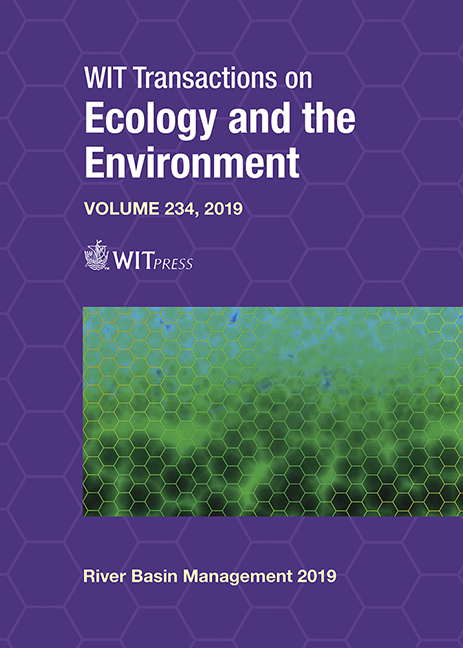PRELIMINARY ASSESSMENT OF THE CURRENT POLLUTION STATUS OF THE RIVER ATUWARA, NIGERIA, WITHIN AN INDUSTRIAL SITE: A BIVARIATE APPROACH
Price
Free (open access)
Transaction
Volume
234
Pages
11
Page Range
209 - 219
Published
2019
Paper DOI
10.2495/RBM190211
Copyright
WIT Press
Author(s)
OGBIYE A. SAMUEL, IMOKHAI T. TENEBE, PRAISEGOD C. EMENIKE, DIWA I. DANIEL, DAVID O. OMOLE, OMEJE MAXWELL, NGENE U. BEN, ONYEKWEREDIKE O. KELECHI, IBHADODE OSAGIE
Abstract
With the increase of industrial growth within developing countries, there is a large tendency for increased pollution within the area. The surrounding rivers may be one of the culprits serving as a waste stream; however, as these rivers are used for agricultural, domestic and recreational purposes, as a cautionary measure, a preliminary assessment of the River Atuwara was carried out to know its status using water quality parameters such as dissolved oxygen (DO), pH, biochemical oxygen demand (BOD), total dissolved solids (TDS), electrical conductivity (EC), coliform count and temperature were examined within certain portions of the River Atuwara, situated in South-West Nigeria. From the study, the descriptive statistics showed that BOD, pH, DO, TDS, EC, coliform count and temperature had mean values of: 3.719±3.34; 6.715±0.48; 4.51±0.49; 113.8±36.67; 174.11±54.62 1036±202 and 25.17±0.313, respectively. The values of pH, DO and coliform count obtained were above the World Health Organization (WHO) and FEPA standards for drinking water. In addition, a principal component analysis (PCA) was conducted on the parameters, which showed that BOD, DO, pH, coliform count and temperature are important parameters to be considered in assessing river water quality. We recommend that adequate treatment of the effluent from the source be carried out as well as using waste treatment plants with natural aerators, to improve the degradation of pollutants. Also, there should be strict follow-up of existing river and watershed management policies, to reduce deliberate and accidental spills.
Keywords
dissolved oxygen, pollution, degradation, river management, dispersion coefficient





